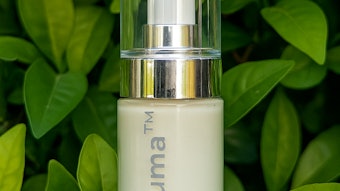In addition to following trends such as emerging markets, changes in distribution channels, consumer preference and the performance of specific beauty segments, there is another trend the industry should be continually monitoring: regulatory oversight and influences from government agencies such as the U.S. Food and Drug Administration (FDA), Environmental Protection Agency (EPA) and interest groups such as People for the Ethical Treatment of Animals (PETA) and the Campaign for Safe Cosmetics.
In some instances, the actions of third parties can provide opportunities for innovation and product differentiation, but they can also lead to boycotts and litigation.
Consider one evolving and intensifying regulatory investigation: the use of formaldehyde and formaldehyde-releasing preservatives found in shampoos, liquid body soaps, nail polishes, hair gels and many other personal care products. When federal officials raised concerns about the use of and potential dangers in formaldehyde in hair-smoothing products, the media was quick to jump on the story.
The Good, The Bad and The Toxic Tort
The beauty industry has been out front in monitoring the use of formaldehyde for a long time. The Cosmetics Ingredient Review’s (www.cir-safety.org) expert panel recently released its views on hair-straightening treatments that use formaldehyde, recommending that for health and safety reasons no product contain more than 0.2% of the chemical.
The American Chemistry Council (ACC) considers formaldehyde to be a “basic-building block chemical,” essential to an estimated $145 billion of the U.S. gross national product, and dozens of industry sectors, in addition to beauty, use formaldehyde. The EPA, the Department of Health and Human Services, and other agencies, however, after studying the chemical for a dozen years, issued a “game-changing” ruling on the toxicity of formaldehyde in releasing the National Toxicology Program’s 12th Report on Carcinogens on June 10, 2011. Formaldehyde and five other chemicals were added to the government’s list of known human carcinogens.
Given that the report was released on a Friday, many missed the weekend coverage, but one interested group, toxic tort lawyers, certainly did not miss the government’s announcement—and the National Toxicology Program’s report could be the tipping point for making formaldehyde the focal point of a wave of toxic tort cases based upon occupational or consumer exposure to the chemical.
Details and Guidance
Toxic torts are lawsuits filed by persons claiming chemical exposures in occupational or household environments caused an illness (the illness is usually, but not always, some type of cancer.) The most famous—or infamous—toxic tort lawsuits have involved exposures to asbestos, silica or benzene.
Plaintiffs’ attorneys have been closely following the developments and studies regarding formaldehyde, in part because the major manufacturers and users of formaldehyde are solvent and numerous—in addition to cosmetics and hair products, formaldehyde is a ubiquitous component in products such as compressed board and cleaning agents. From the plaintiffs’ lawyers’ perspective, a viable defendant who sold or used a national product that has an alleged connection to a serious form of cancer is the best possible scenario; the National Toxicology Program’s report—stating that, in part, “Many factors, including the amount and duration of exposures, and an individual’s susceptibility to a substance, affect whether a person will develop cancer,” leading to the clear conclusion that formaldehyde is a human carcinogen—strengthens their resolve.
The chemical’s potential harm expanded from a very rare nasal cancer to a much more common form of leukemia (acute myelogenous leukemia, or AML). Approximately 30,000 leukemia cases are diagnosed each year in the U.S., and approximately half are AML, which is one of the most difficult forms of leukemia to treat. And the EPA determined formaldehyde should be considered a cause of AML. The World Health Organization’s International Agency for Research on Cancer’s also confirmed the connection between formaldehyde and AML.
The government’s listing of formaldehyde in its 12th Report on Carcinogens brings the level of concern to a new height that will likely lead to development of new federal regulations on its use. It is better to think about the risks and initiate planning than to try to deny the potential problems. The beauty industry can take the following steps now to prepare for potential formaldehyde litigation:
- Keep informed regarding industry practices and recommendations regarding the safe handling and use of formaldehyde.
- Keep your employees informed as you become informed. Don’t let their knowledge be limited to the popular press or what their friends or relatives tell them. Nothing defeats rumors like facts and science.
- Maintain your documents and records, including electronic information, in an accessible and producible manner.
- Evaluate your litigation risks. Do you have insurance coverage? Are you owed indemnity by someone else (e.g., the seller of the product at issue)?
- Plan ahead for your first (or next) lawsuit. What legal counsel will you retain? Who should be your company witnesses?
- Continue to follow the government’s actions on its report and discussions from the ACC and Formaldehyde Council.
Take prudent steps now to protect your business. In toxic tort lawsuits, coordinating the discovery process, leveraging efficiencies and establishing a base level of facts is critical to coordinating the industry’s response.
For more information on formaldehyde awareness and potential problems, the American Chemical Council (www.americanchemistry.com) and the Formaldehyde Council (formaldehyde.nclud.com) offer information regarding the latest studies on the chemical and findings, make recommendations, and publish best management practices.
Stan Perry is a partner at Haynes and Boone, LLP. 1-713-547-2039; [email protected]










